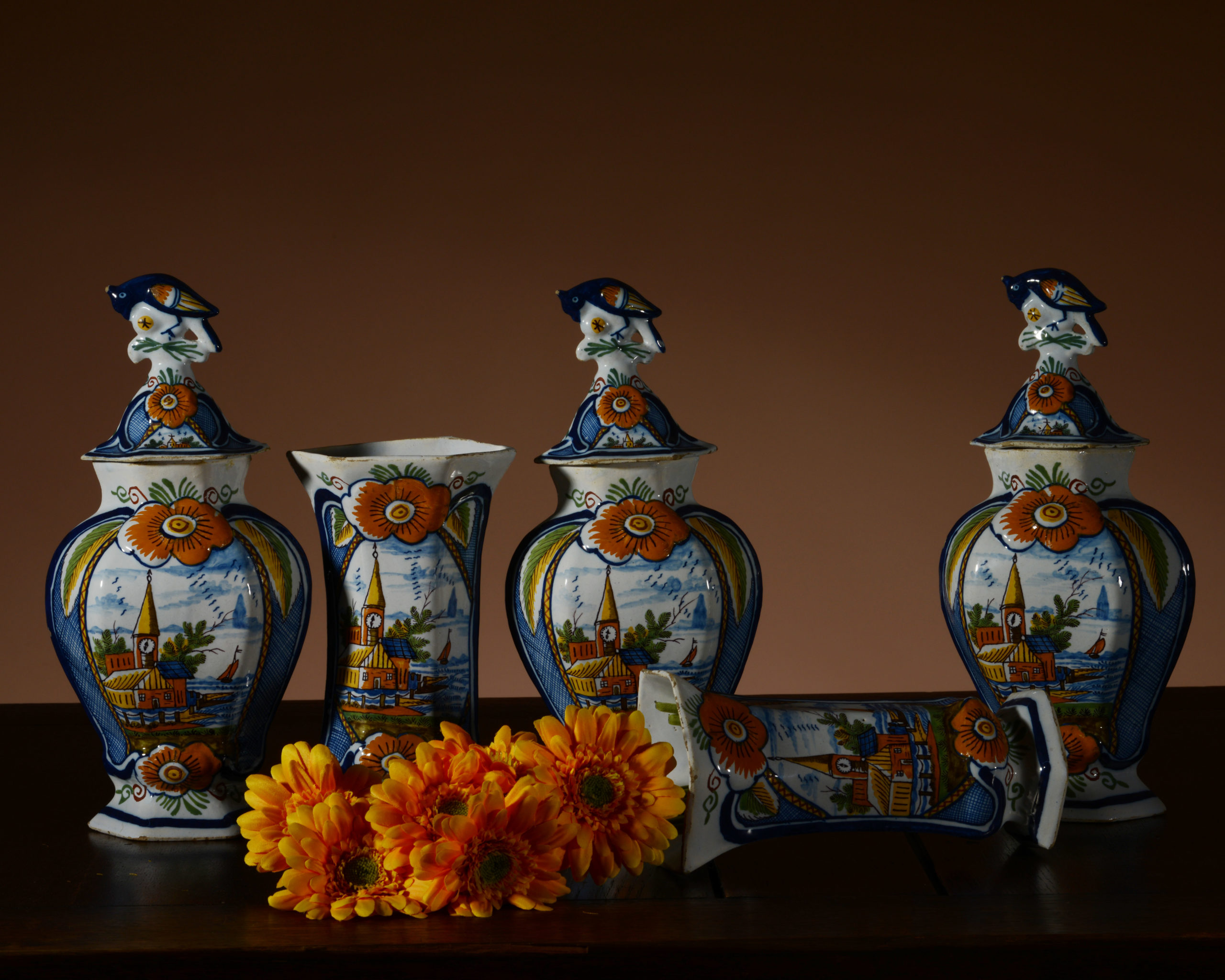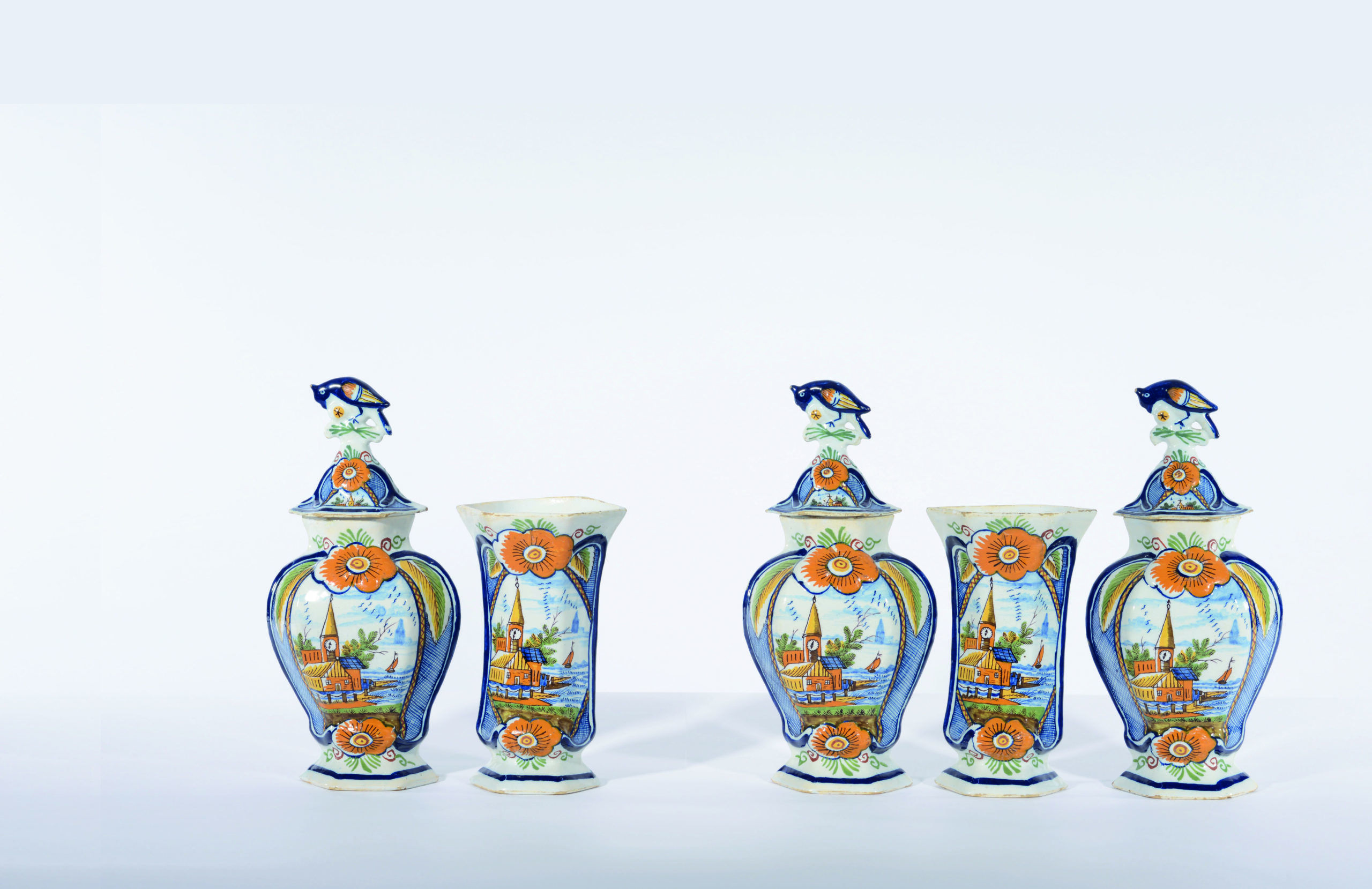
[popup_trigger id=”13756″ tag=”span”]![]() [/popup_trigger]
[/popup_trigger]
Images on this website are licensed under a
Creative Commons Attribution-NoDerivs 3.0 Unported License.

OBJECT
D2147. Polychrome Garniture
Delft, circa 1820
Each marked with three bells in manganese for De Drie Klokken (The Three Bells) factory
Comprising three baluster-form vases and covers and a pair of beaker vases, each of oval form and painted on the front with a landscape of buildings and a clocktower on the shore and a sailing boat within a molded blue cartouche issuing a large orange flower head at the top and bottom issuing green and yellow leaf fronds landscape scene within a blue molded cartouche and an orange flower head at the top, above the knop a blue parrot with orange and yellow delineated wings, perched on green sprigs and pecking at a fruit.
DIMENSIONS
Height: 32.4 cm. (12.8 in.)
NOTE
The history of garnitures is closely linked to the overall development of ceramics as a central element within the decoration of interiors. Although some models were timeless, their design and decoration often followed the latest fashion. The beginning of their production corresponds to a general interest for Chinese motifs and designs. Over the following years, the Delft masters rivaled each other in inventiveness. By the eighteenth century, the arrival of the rococo movement encouraged the creation of a wide range of garnitures, and overtime decorations became more European or even Dutch, with landscape scenes as can be seen on the present garniture. However, the finials shaped as a bird picking a cherry were Asian in design. Concurrent with the Rococo style, interior designers transformed cabinet cornices from straight into serpentine. It was only logical that from about 1730-40, the next progression in this development would be the integration of wooden consoles into the cabinet cornices, the perfect stage for the presentation of garnitures.
SIMILAR EXAMPLES
A garniture consisting of two baluster-shaped vases and one beaker vase of similar shape, colors and marked for De Drie Klokken factory, but with a different landscape scene in the cartouche is illustrated in Van Geenen, p. 172, no. 15.20.








